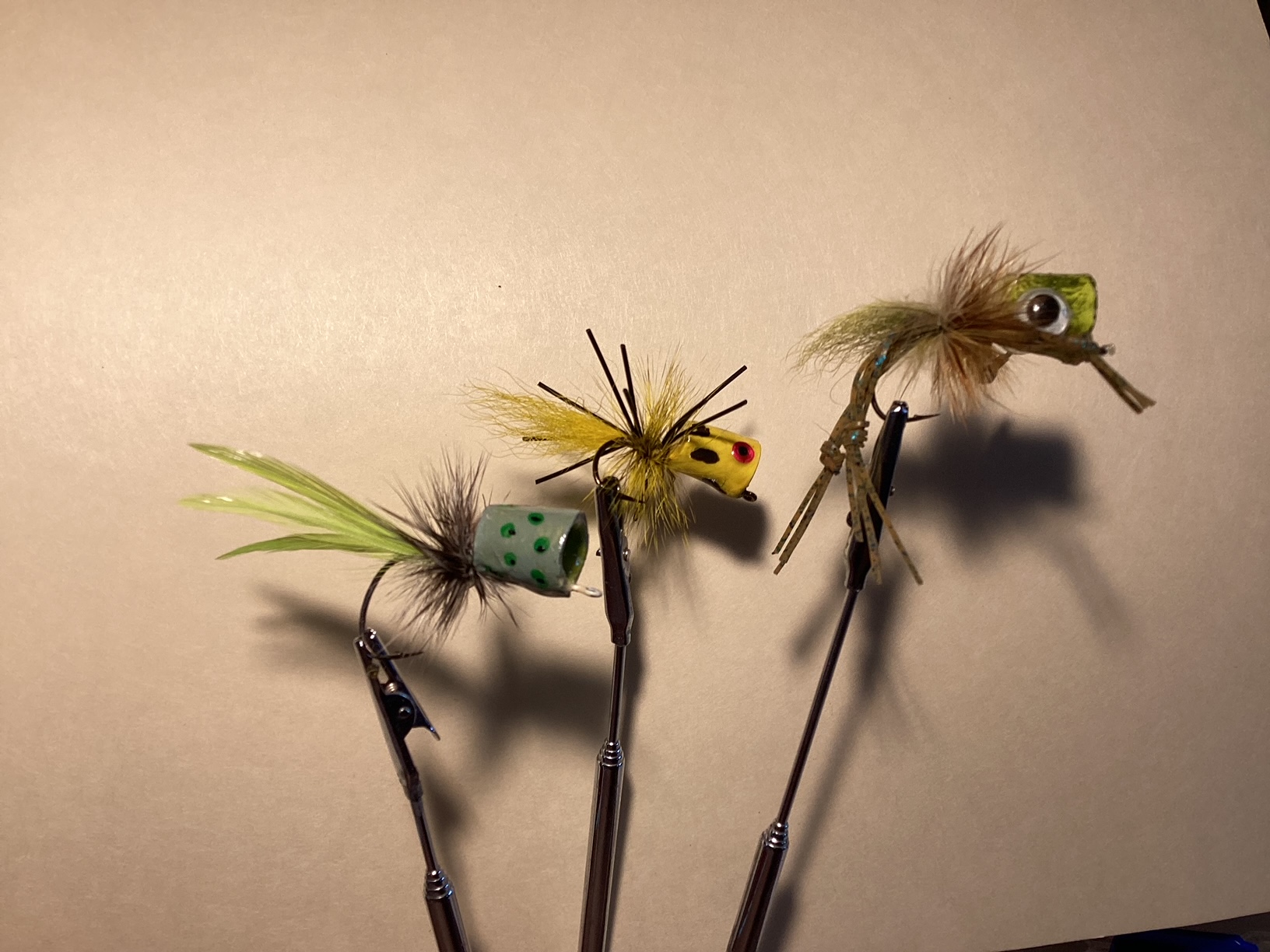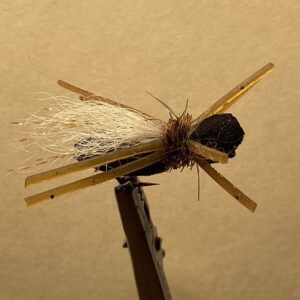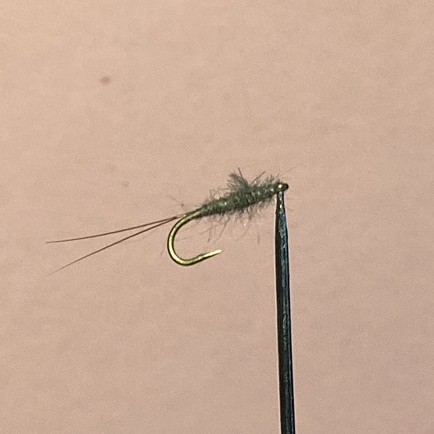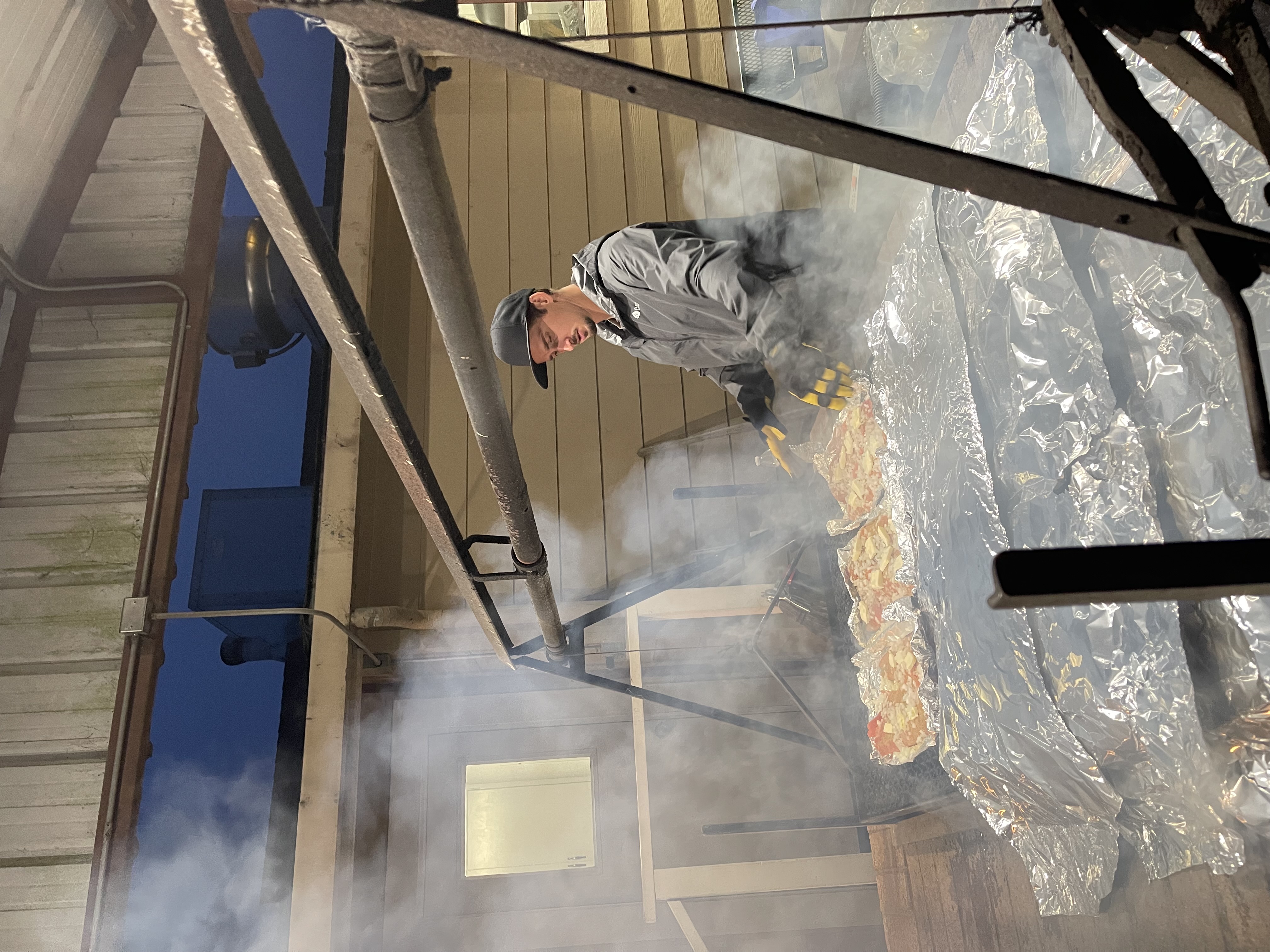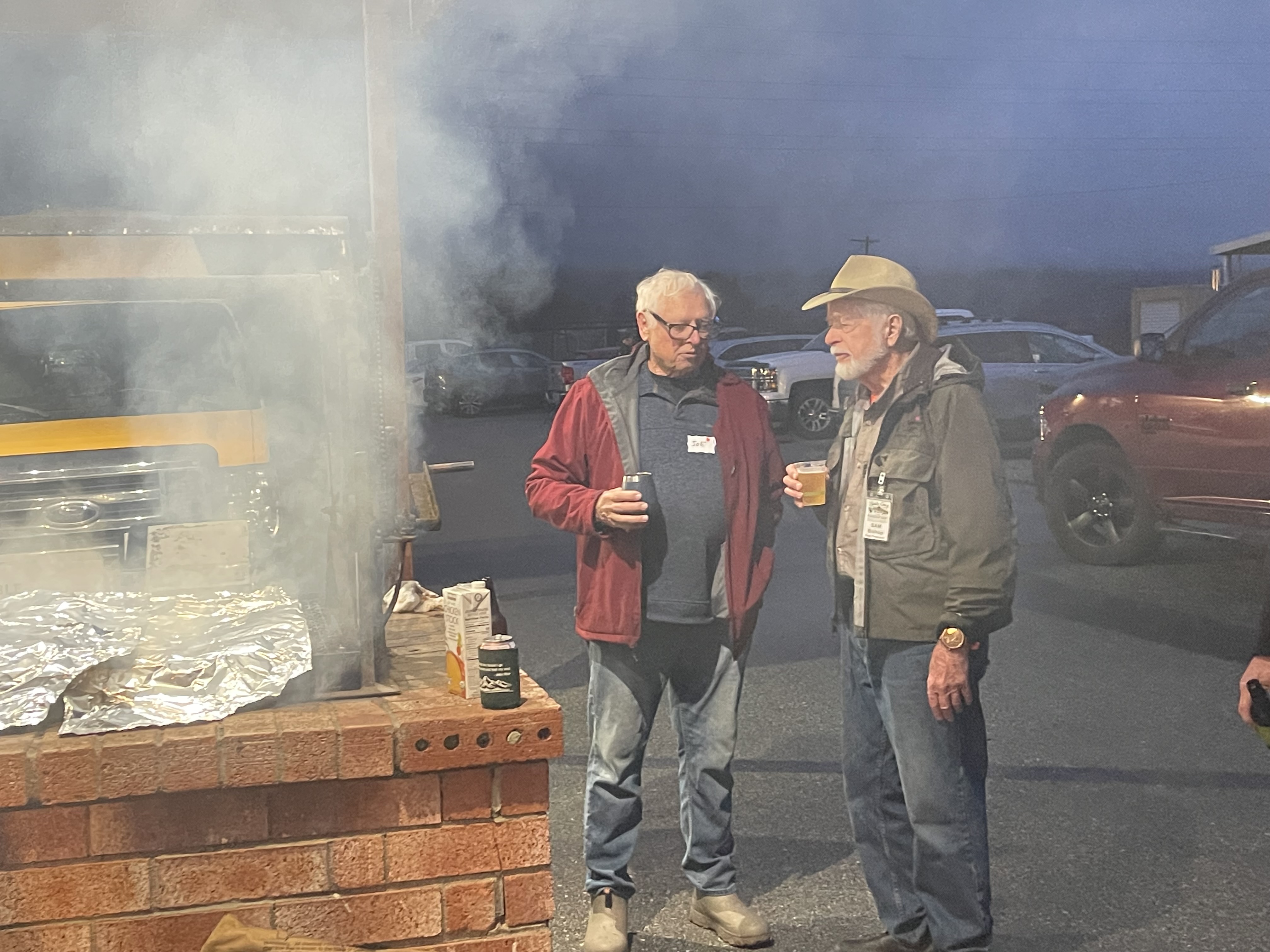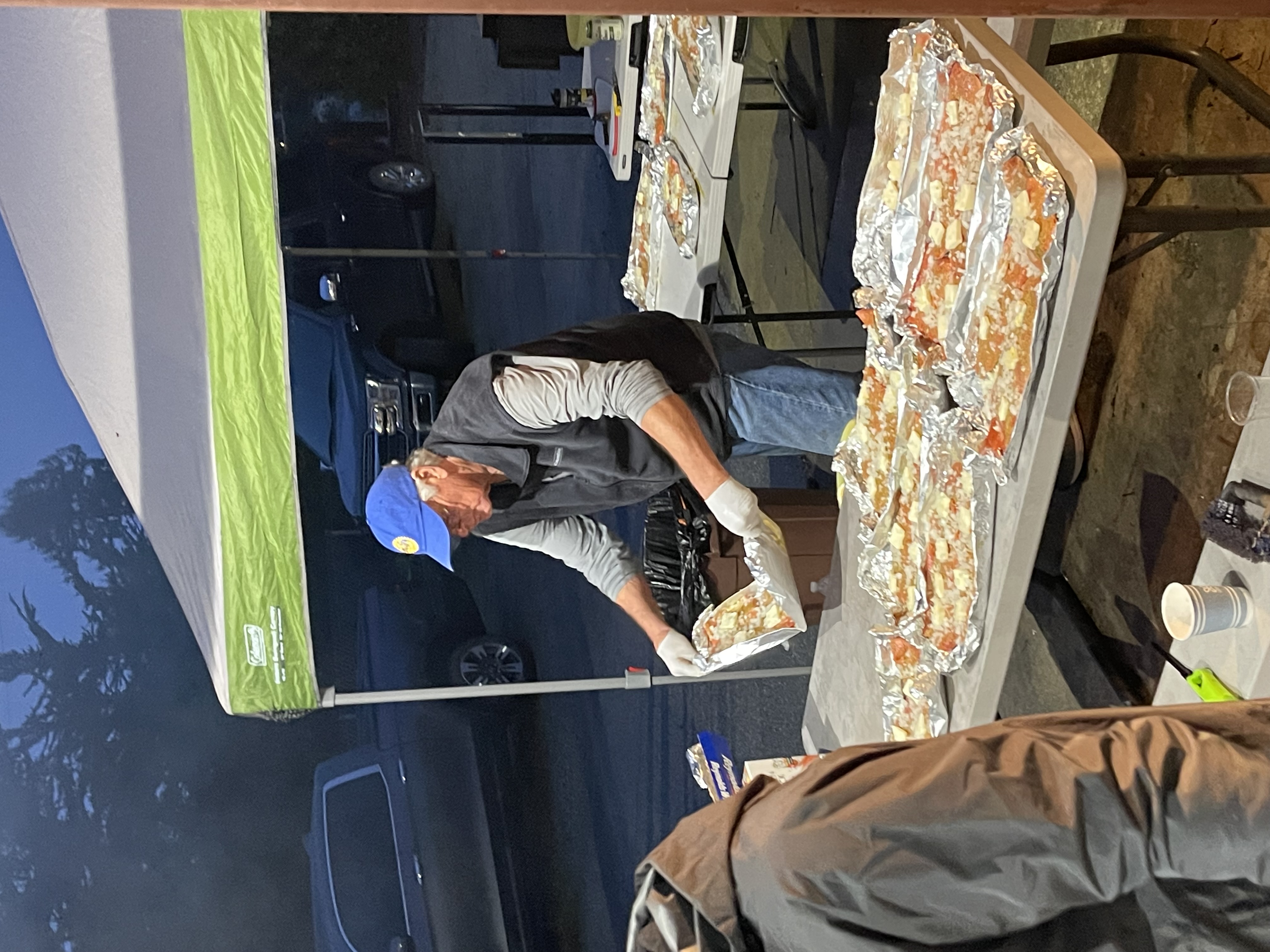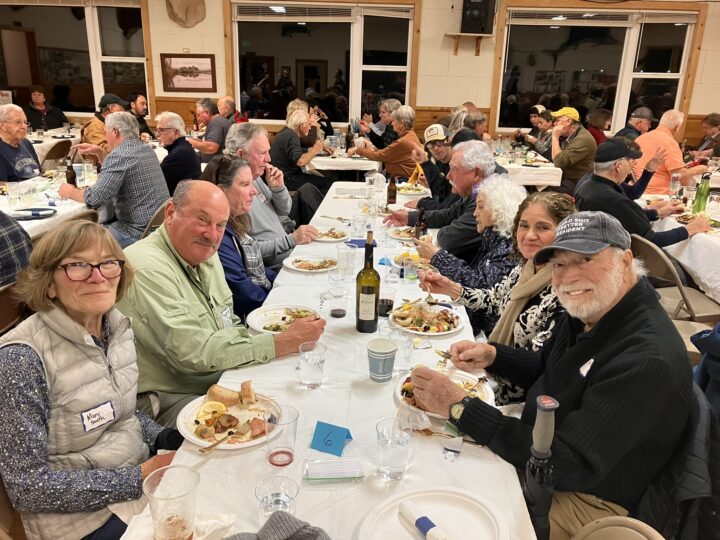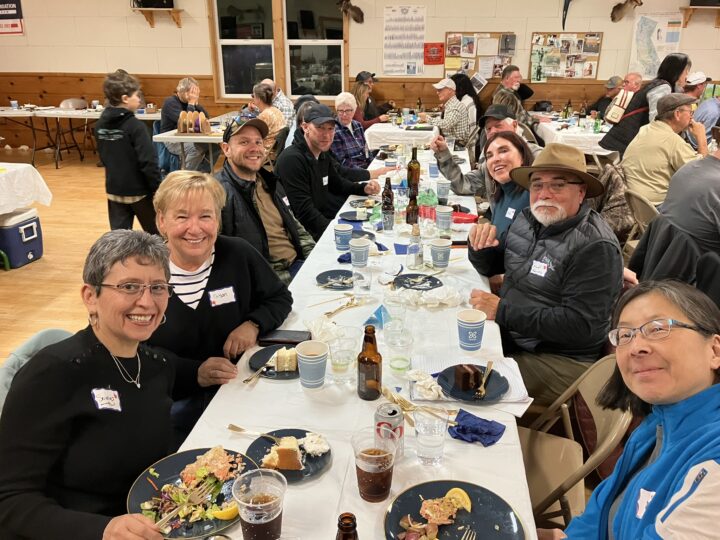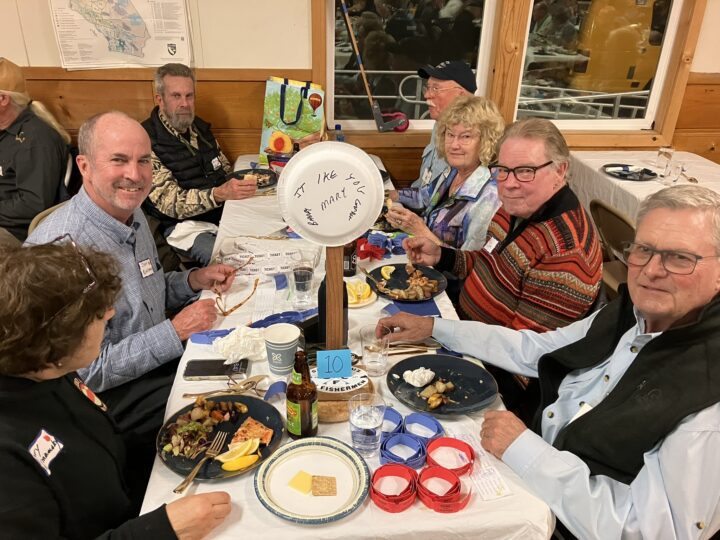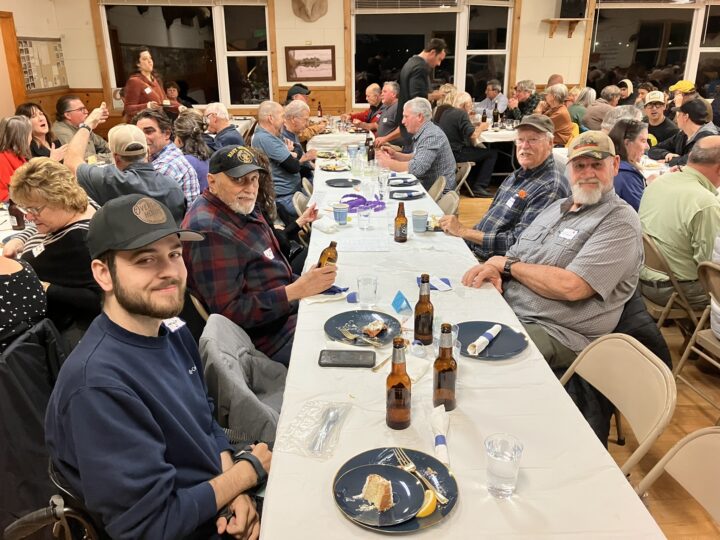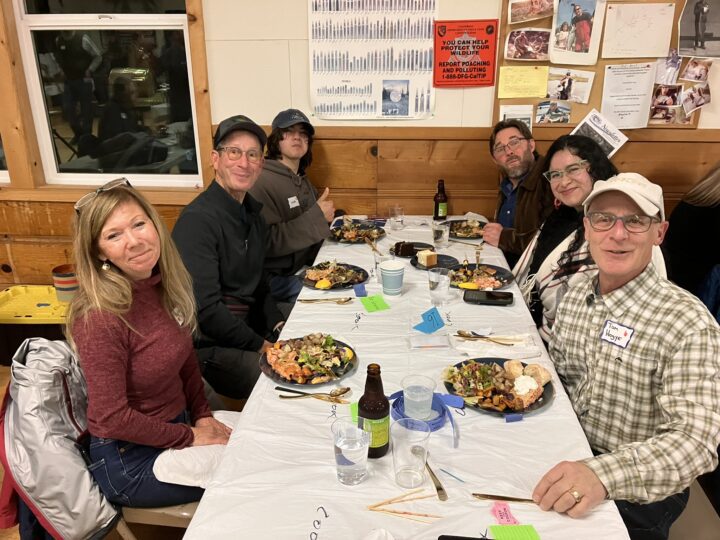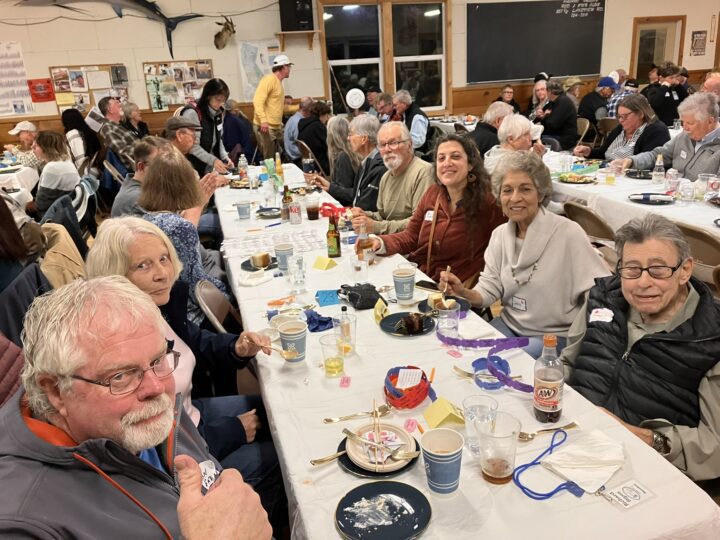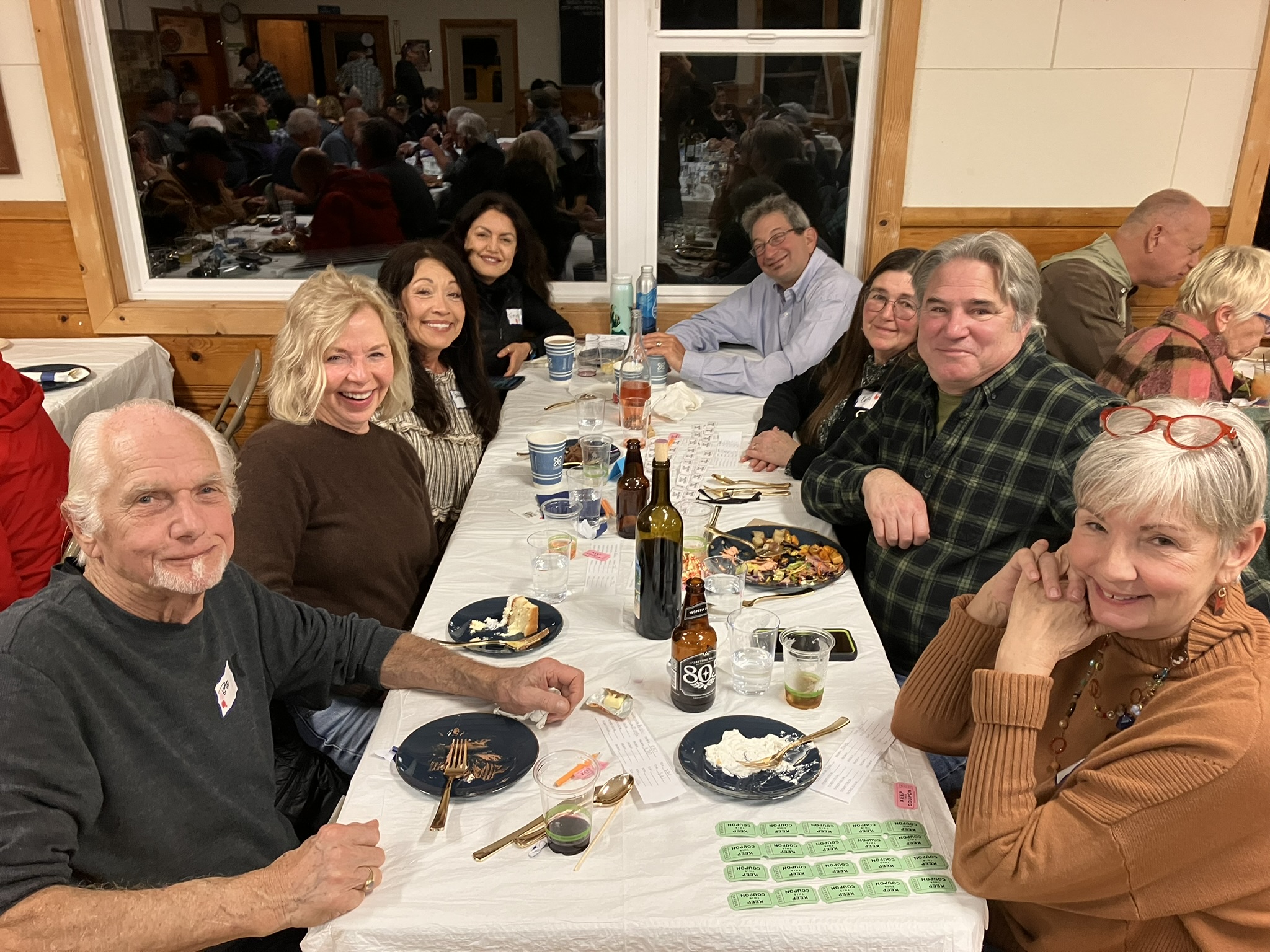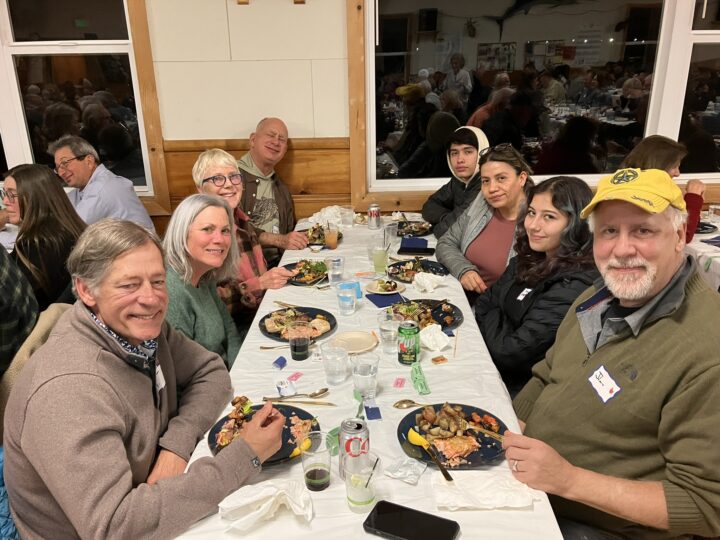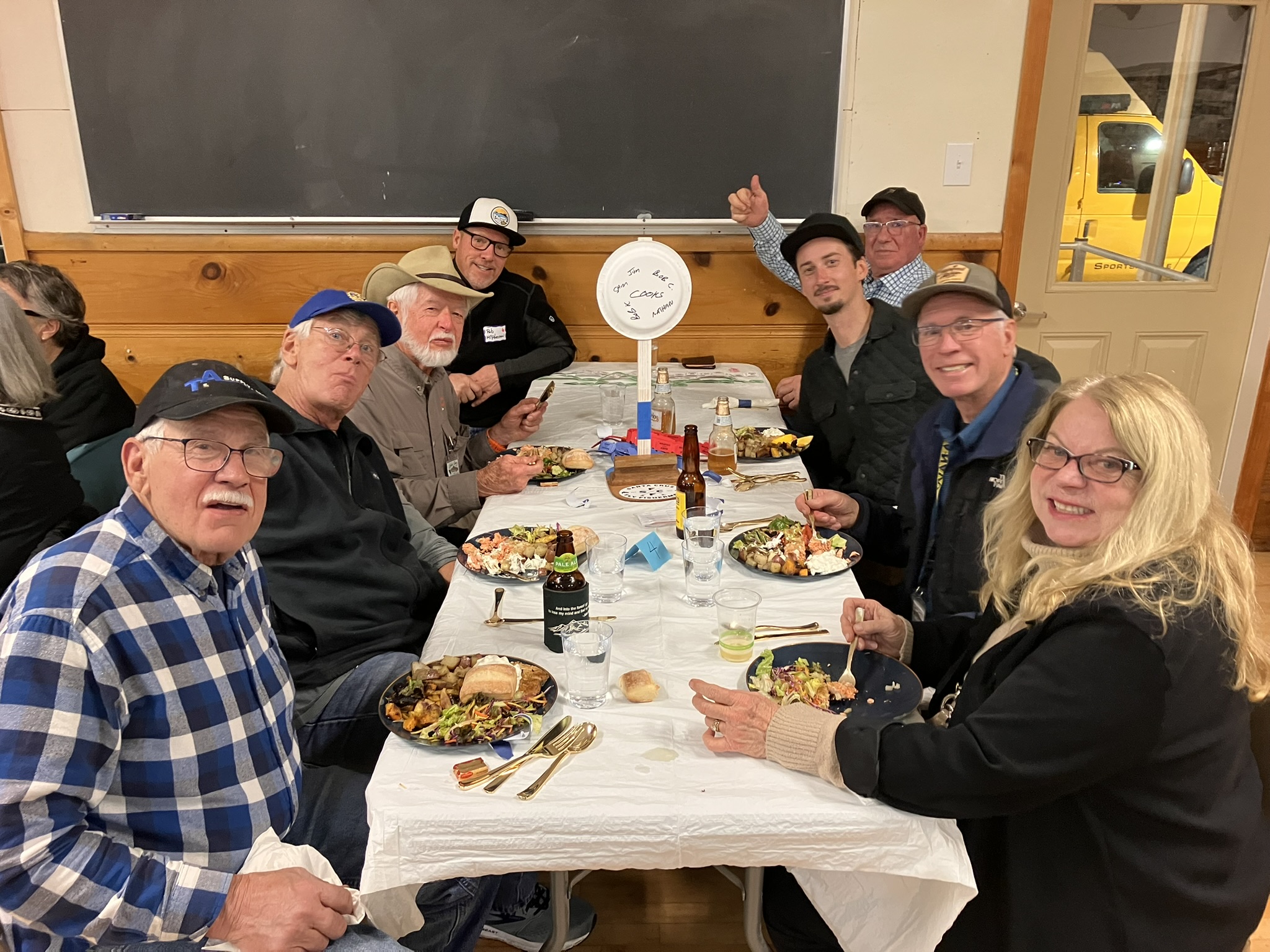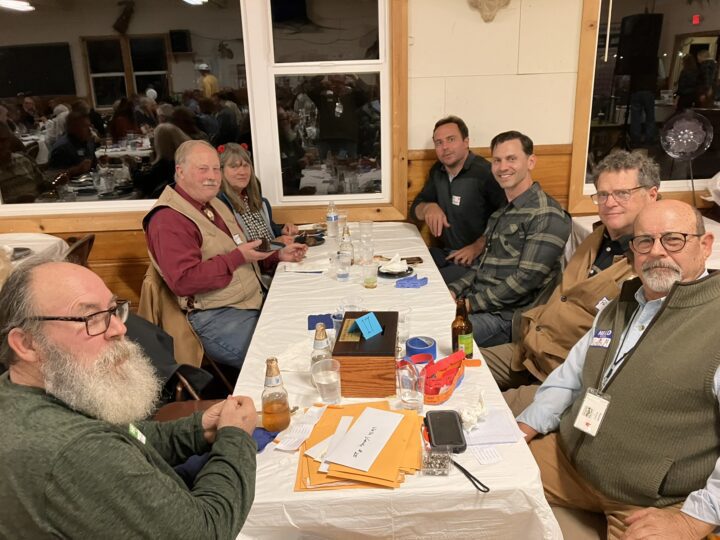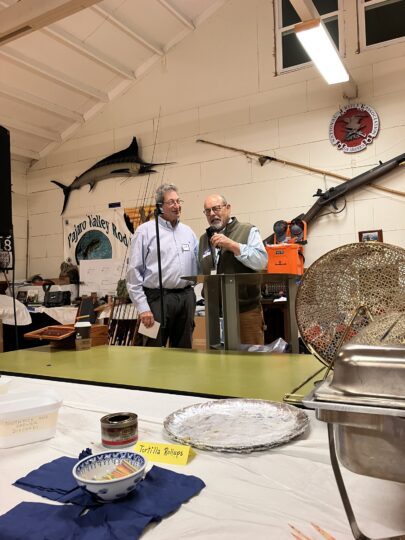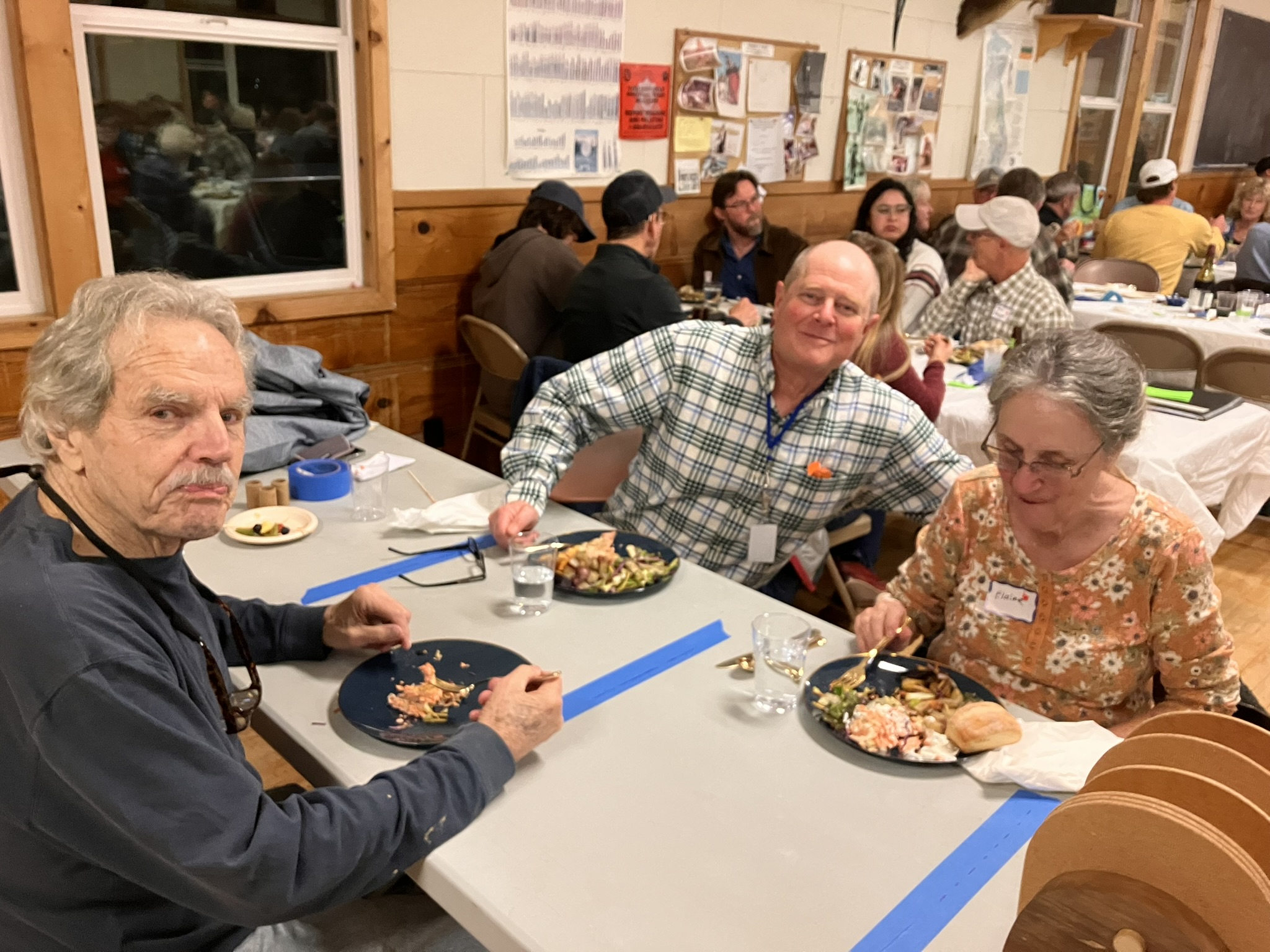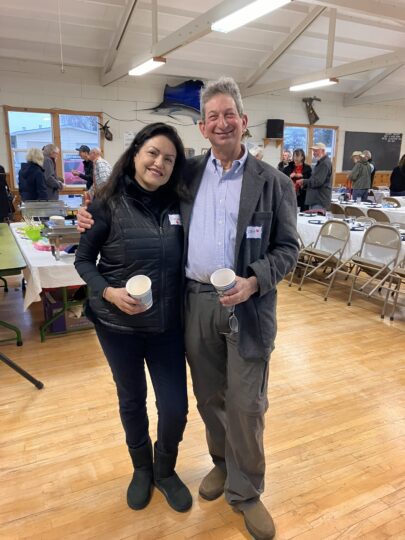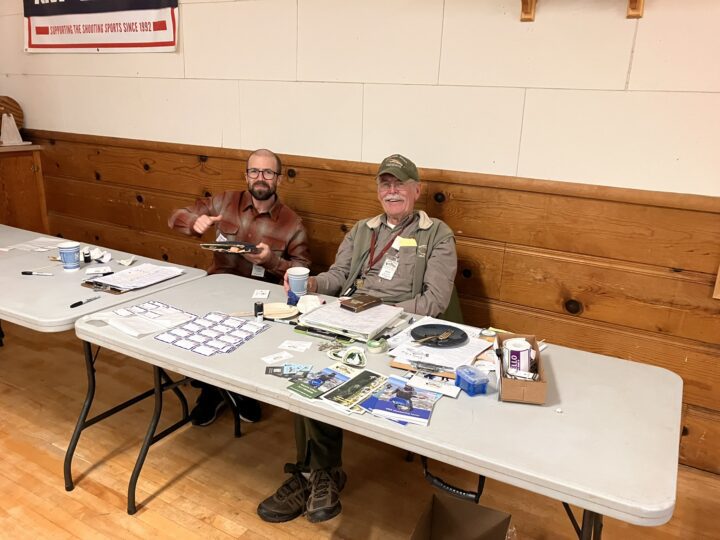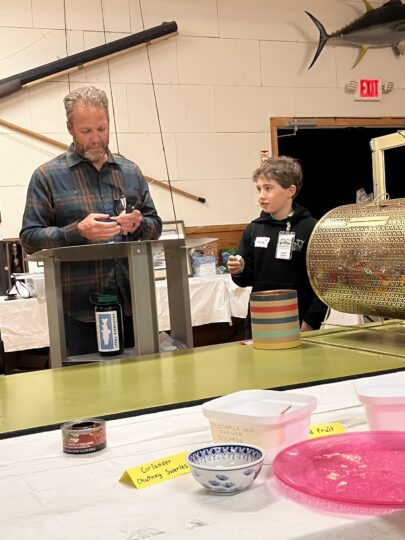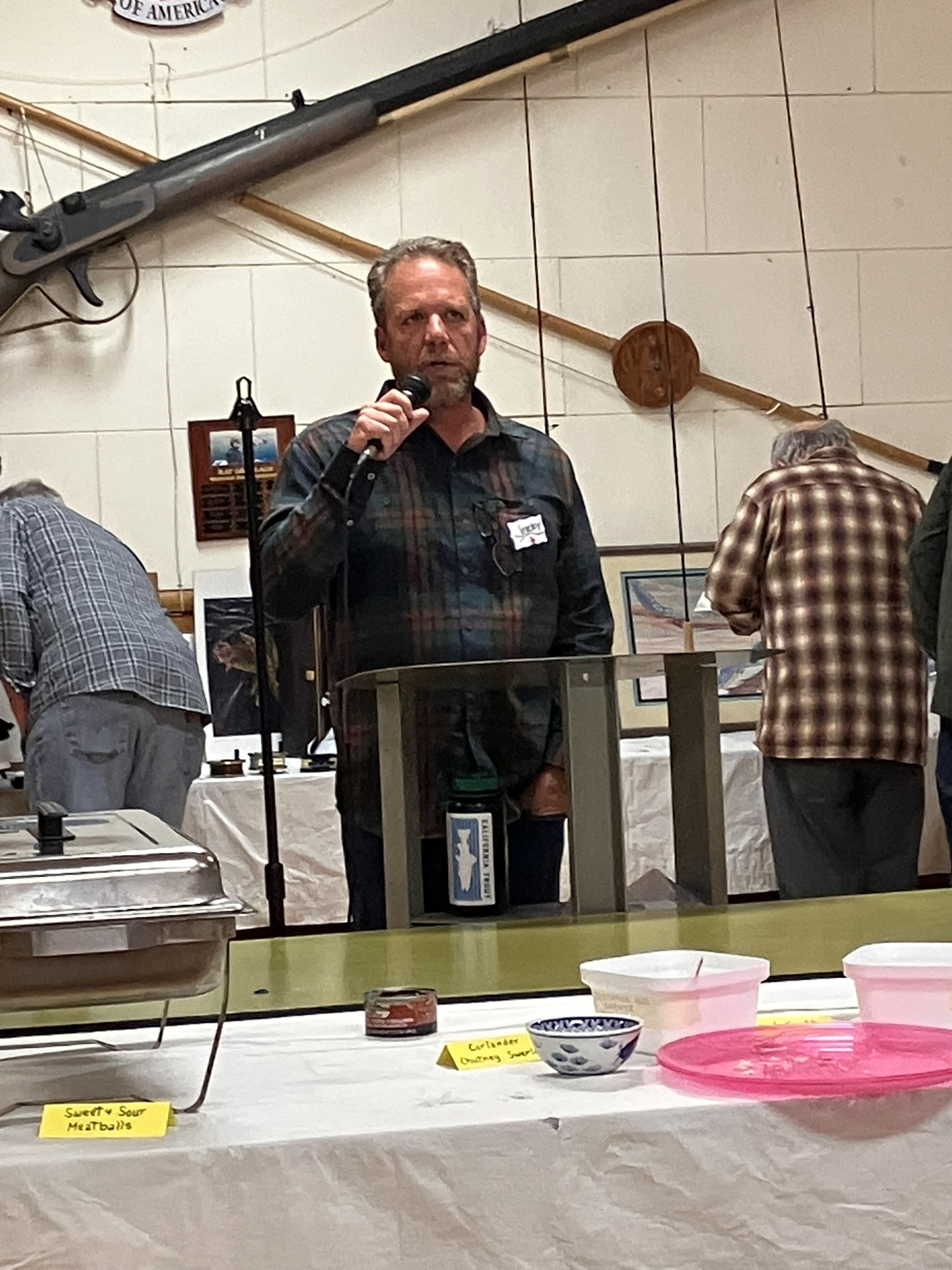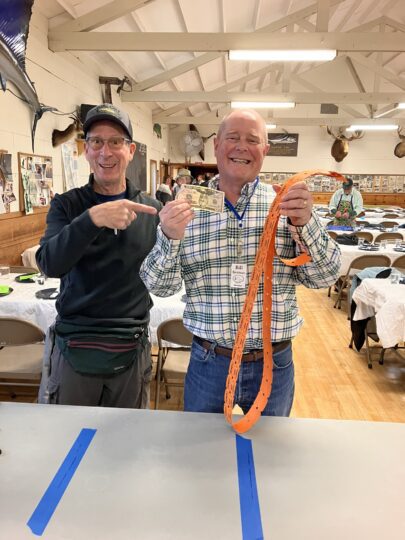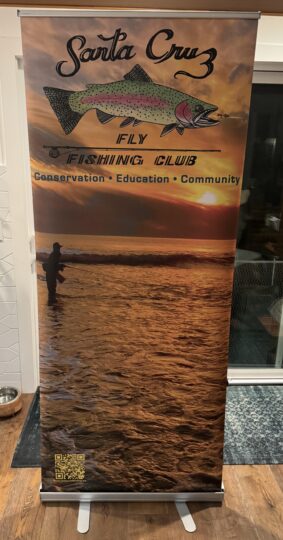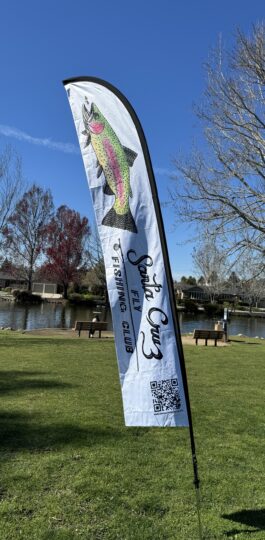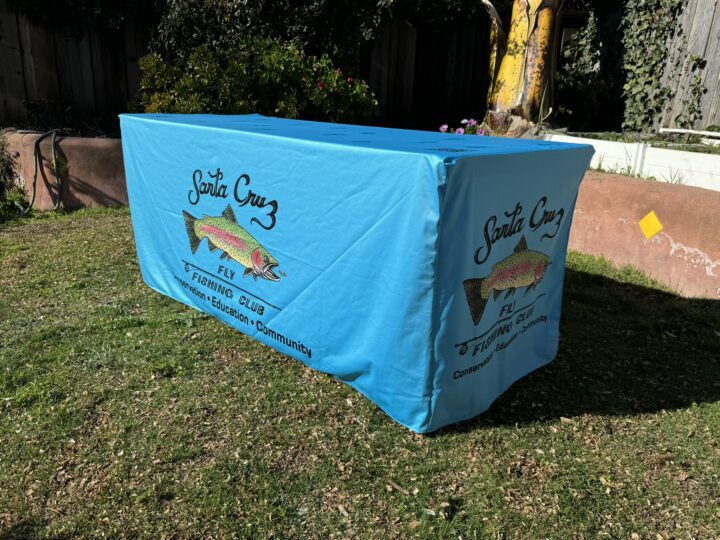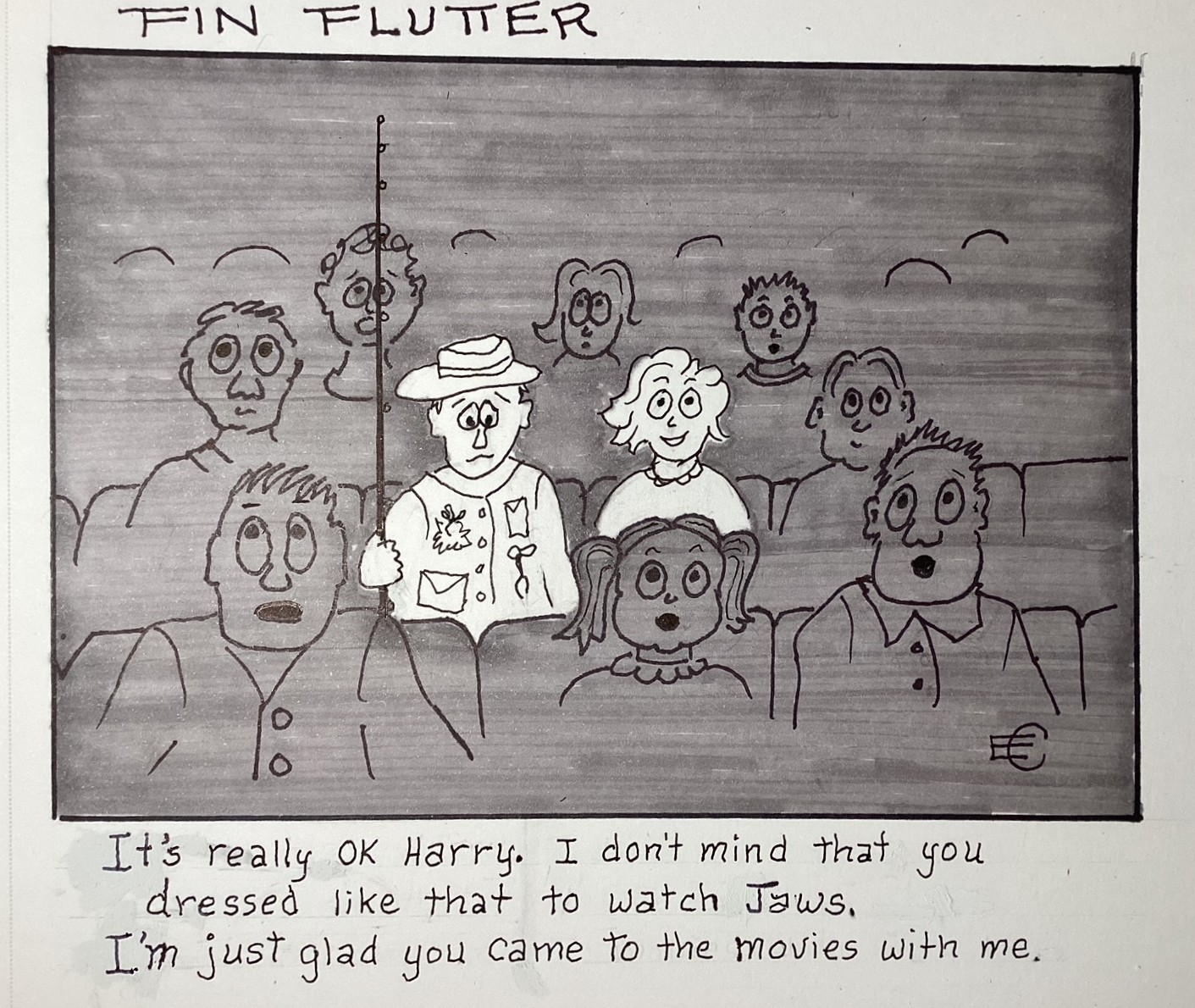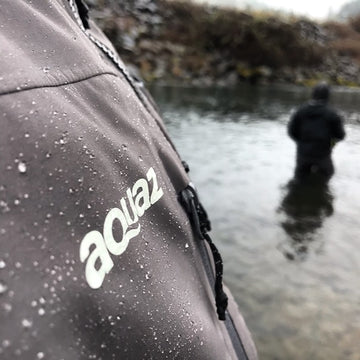The newsletter provides brief fishout info. For full detail, go to the website menu and select EVENTS -> Fishout Schedule
| Date | Link (new tab) | Description |
|---|---|---|
| May 10 5:45 am - 10:00 am | Rio Del Mar State Beach Surf Fishout | First Surf Fishout of 2025! Saturday May 10th 2025 5:45AM Location: Rio Del Mar State Beach |
| May 16 - May 19 | Upper Sacramento River / McCloud Fishout – UPDATED – | This Fishout’s final date is still TBD and subject to river flows as we get closer to spring. The upper Sac. has excellent access via. Hwy 5 and by walking the railway tracks. Euro/High Stick/Indicator Nymphing is the go to. |
| Jun 02 - Jun 04 | Pyramid Lake Fishout | Fishmaster: Mike White Greetings fellow Santa Cruz Fly Fishing Club Members I have been leading the Pyramid Lake fishing trip for the past ten years. It has always been a remarkable fish out, and one of the best attended too. However the past three years have been very challenging and we have not caught very many fish and people have come away disappointed with the outcome. That leads me to a new discovery about how to fish Pyramid Lake. Jeff Goyertte, a club member and our raffle coordinator took a trip to the lake and fished with Rob Anderson, a [...] |
| Jun 07 5:15 am - 10:00 am | Manresa State Beach Surf Fishout | Location: Manresa State Beach (Ocean View Drive, La Selva Beach Parking Lot) Fish Master: Lance Boiling / clboling@gmail.com / 408-728-0548 Species: Surf Perch, Striped Bass Min./Max Participants: NO Limit Cali Surf Style Gear: 6-8wt. Rods with full sinking lines or shooting heads to match the rod. Polarized glasses (safety), Mandatory Accessories: Wader Belt & Stripping Basket (If a basket is needed, some maybe available to borrow or purchase. Please contact the Fishmaster ahead of time. Also there are many DIY Stripping Basket making tutorials online) Flies: Clousers, wooly buggers, sand crabs, etc. https://www.lostcoastoutfitters.com/collections/surf-flies What to Expect: Good Times Meet at 5:15AM Sunrise is 5:47AM and [...] |
| Jun 20 - Jun 22 | Burney and Around – UPDATED – | Date and description subject to change due to seasonal conditions Please Stay Tuned Fishmaster: Alex Ferber Location: Lakes, rivers and streams of the Burney area Species: Trout Duration: 3 Days Cost: No Cost Meet Up: Date of Fishout TBD and subject to change due seasonal conditions Hat Creek Park off Hy 299 (See the map below). The park is approximately 10 minutes from the highway 299/80 junction. The park is on the left hand side going east on 299. If you google Hat Creek Park, it should show up. This meet up will be a general discussion with your Fishmaster [...] |
| Jun 22 - Jun 28 12:00 am | Lake Almanor/Hex Hatch – Jun 22th – 28th 2025 | The Lake Almanor Fishout is scheduled for the last week of June, 6/22 thru 28th, 2025. This time period is, hopefully, the peak of the annual Hexagenia hatch that begins generally mid-June and runs through mid-July. The most productive fishing takes place early evenings on into past dark between Lake Almanor West to Canyon Dam on the Southwest side of the lake. Most of the fishing is done from float tubes as well as small boats or even from shore. In addition to the evening "Hex" hatch, a multitude of opportunities exist for fishing throughout the day to include Little [...] |
| Jul 05 5:20 am - 10:00 am | Beer Can Beach Surf Fishing – UPDATED – | Date: Saturday, July 5, 2025 at 5:20 am. Location: Beer Can Beach (AKA Summer Beach) - Staircase at 1191 Via Palo Alto, Aptos (no bathrooms) Fish Master: Scott Kitayama / scottkitayama@gmail.com Species: Surf Perch, Striped Bass Meet at 5:20AM. Sunrise is at 5:53 and we are fishing a 3-foot tidal crest, high tide being 8: 55AM. Breakfast at Mike Lovejoy’s house, 115 Driftwood Ct, Aptos, please RSVP by July 3rd to mikelovejoy94@gmail.com. Coffee at 8:00am and breakfast served 8:30-9:30. Park on the street. Hot water available for hand wash. Hose available for rinsing equipment. |
| Jul 07 6:00 am | Loreto Fly Fishing Trip | Loreto Mexico Details to be finalized and date to be confirmed The fishing day starts around 6:00 a.m. and we usually get back to the harbor between 1:30 and 2:00 p.m. Spend the rest of the afternoon fishing from the beach, having a cool drink in the pool, exploring Loreto, or just sitting around telling some tall fish stories. And, you will have many exciting moments on the Sea of Cortez to talk about. The approximate cost for everything but meals and airfare is: *$995.00 per person, double occupancy; around $460.00 for a non-fishing guest. - It does not include [...] |
| Aug 09 5:45 am - 8:30 am | Palm Beach Surf Fishout | Fishmaster : Scott Kitayama Contact info: scotttkitayama@gmail.com Location: Palm Beach State Park Date High Tide Low Tide Sun Moon AM ft PM ft AM ft PM ft Rise Set 9 Sat 12:06 PM 4.0 10:53 5.5 5:25 -0.7 4:46 2.4 6:19 8:06 Species: Surf Perch, Striped Bass Min./Max Participants: NO Limit Cali Surf Style Gear: 6-8wt. Rods with full sinking lines or shooting heads to match the rod. Polarized glasses (safety), Mandatory Accessories: Wader Belt & Stripping Basket (If a basket is needed, some maybe available to borrow or purchase. Please contact the Fishmaster ahead of time. Also there are many [...] |
| Sep 06 6:00 am - 10:00 am | Beer Can Beach Surf Fishing – CO Fishout with The San Jose Fly Fishing Club | Location: Beer Can Beach (AKA Summer Beach) - Staircase at 1191 Via Palo Alto, Aptos Fish Master:Michael Lovejoy <mikelovejoy94@gmail.com> Species: Surf Perch, Striped Bass Min./Max Participants: RSVP For Breakfast by 5:00pm September 3nd Gear: 6-8wt. Rods with full sinking lines or shooting heads to match the rod. Polarized glasses (safety), Mandatory Accessories: Wader Belt & Stripping Basket (If a basket is needed, some maybe available to borrow or purchase. Please contact the Fishmaster ahead of time. Also there are many DIY Stripping Basket making tutorials online) Flies: Clousers, wooly buggers, sand crabs, etc. Steve Adachi Clouser What to Expect: Meet at [...] |
| Sep 20 - Oct 04 12:00 am | Mammoth Fishout -Sept. 20-Oct. 4th | Fall trout fishing in streams and lakes. Trip is for seven days and the participants share a condo in Mammoth Lakes. |
| Oct 04 5:45 am - 10:30 am | Manresa State Beach Surf Fishout – CO Fishout with The Delta Fly Fishers | Location: Manresa State Beach (Ocean View Drive, La Selva Beach Parking Lot) Meet at 5:45AM Sunrise is 7:04AM and we will be fishing an incoming tide cresting at 9:28AM. Fish Master: Lance Boiling / clboling@gmail.com / 408-728-0548 Species: Surf Perch, Striped Bass Min./Max Participants: The Delta Fly Fishers will be joining us on this outing Gear: 6-8wt. Rods with full sinking lines or shooting heads to match the rod. Polarized glasses (safety), Mandatory Accessories: Wader Belt & Stripping Basket (If a basket is needed, some maybe available to borrow or purchase. Please contact the Fishmaster ahead of time. Also there are many DIY [...] |
| Oct 16 - Oct 19 | O’Neill Forebay ‘Stosh’ Memorial Fishout October 17-20th | Camping and striped bass fishing at the O'Neil Forebay. |
| Oct 31 - Nov 02 12:00 am | Trinity River Fishout | Target: Steelhead and trout. Contact Alex Ferber if you are interested in going on the trip, text Alex at (831) 419-0564 or alex.ferber74@gmail.com. |
Posted on April 22nd, 2025
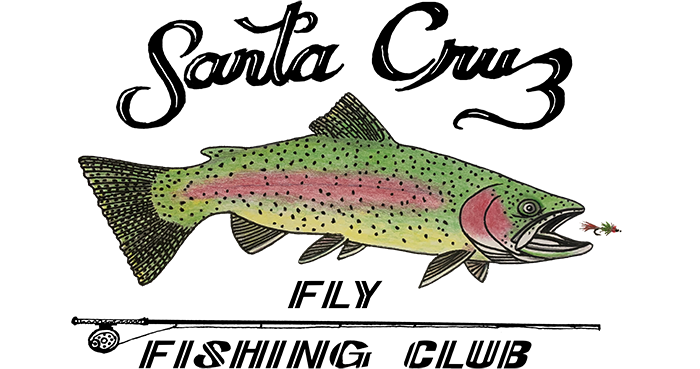
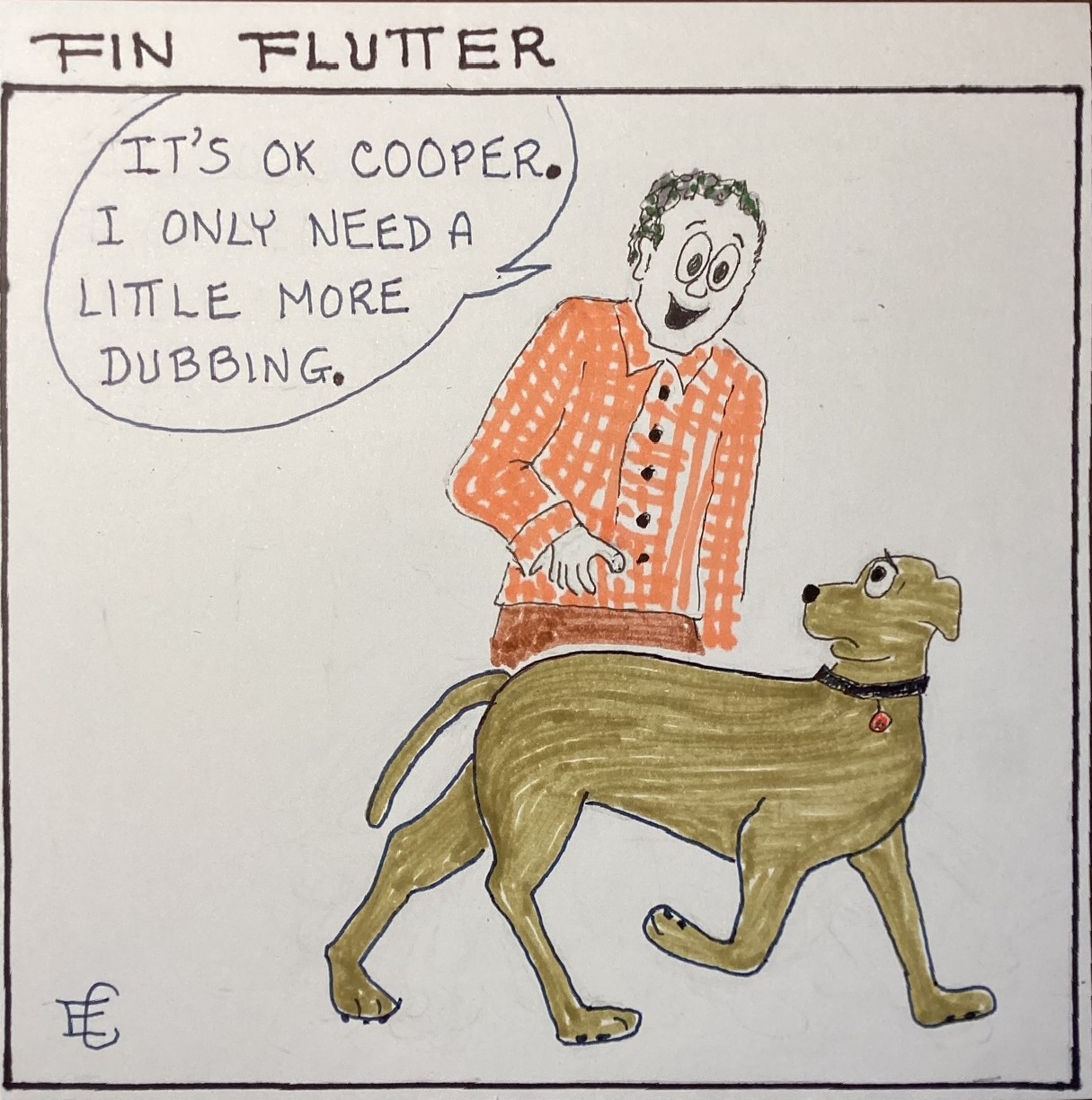
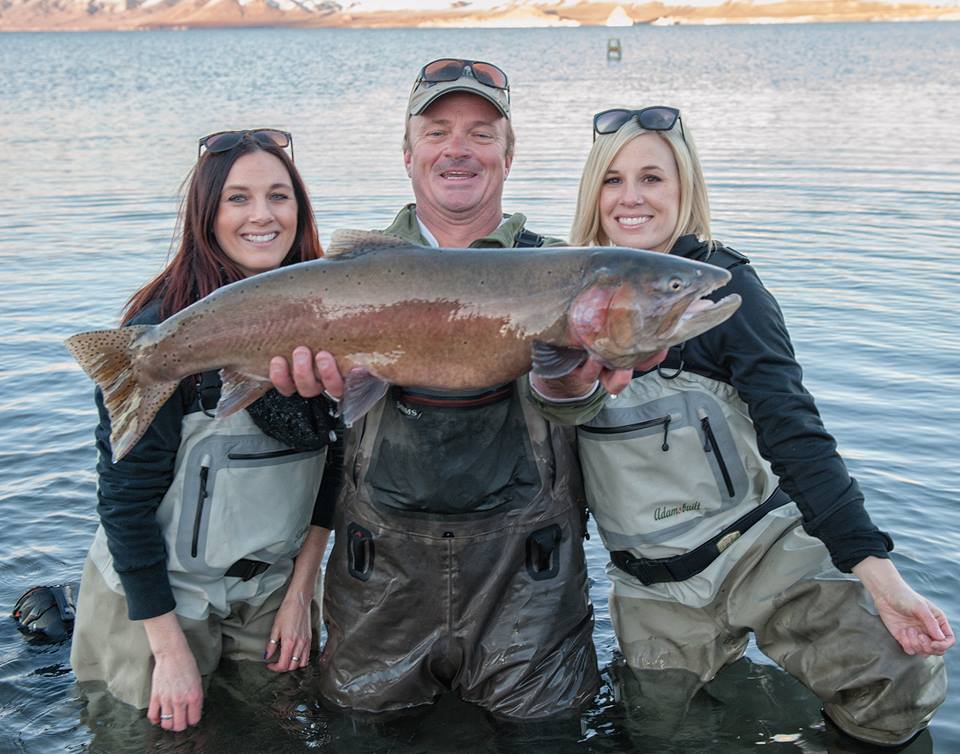
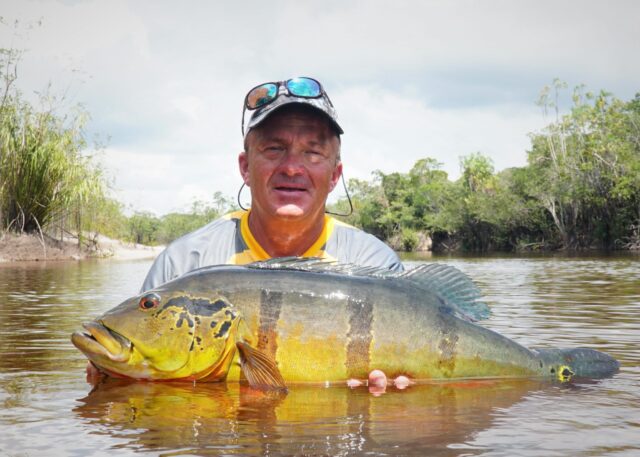
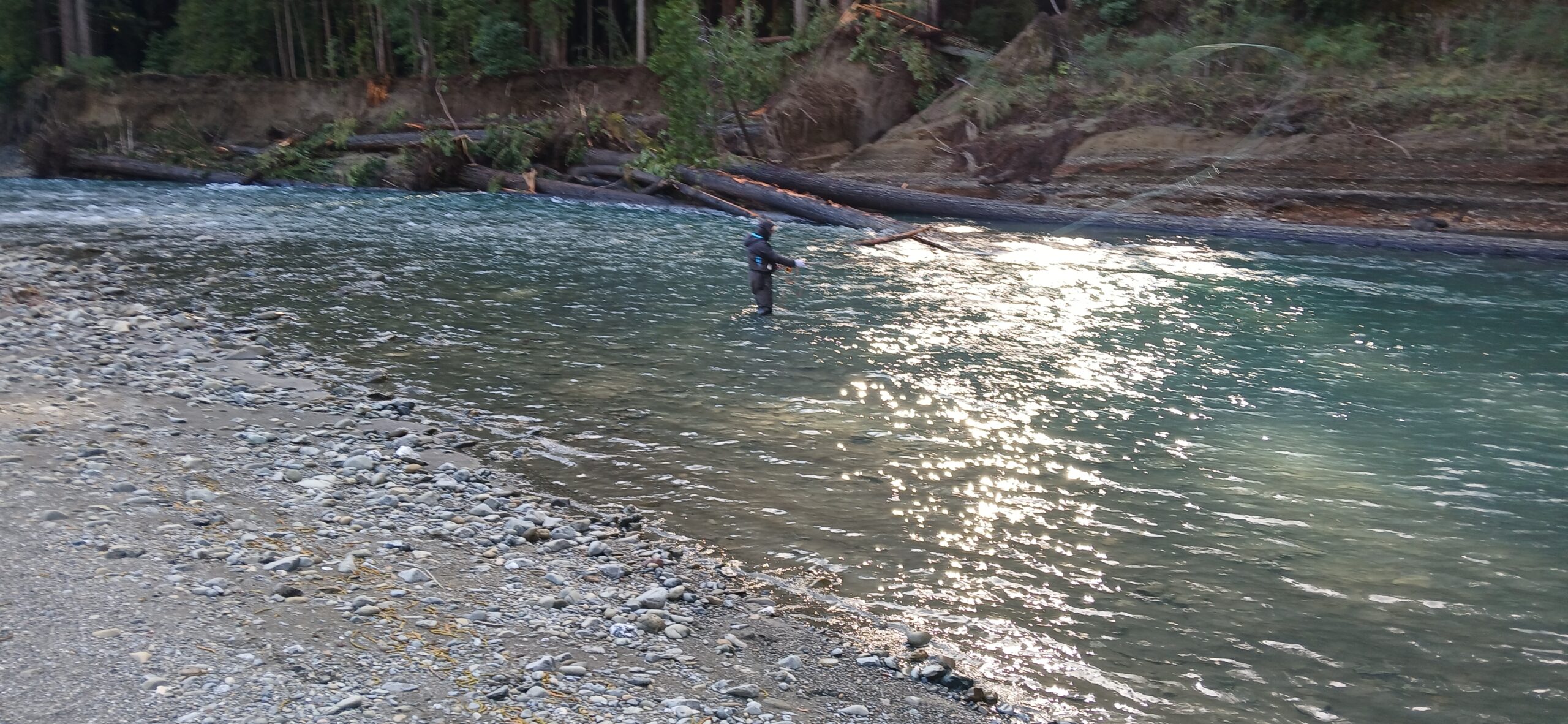

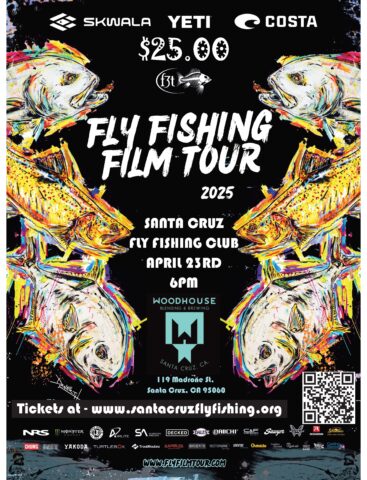
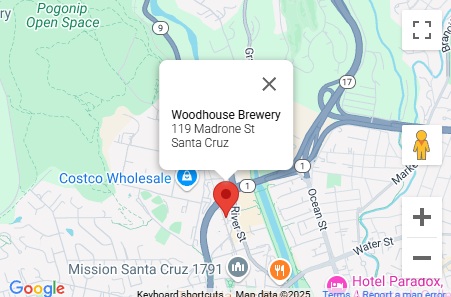
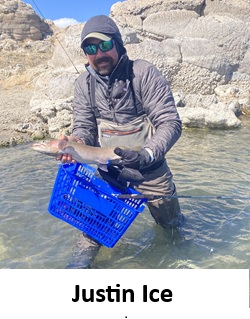 A primary reason I joined the club was to participate in the Fishouts. We are fortunate to have members here who are and have been willing to share some of their favorite places with those in the club. We have members that have been hosting the same trip for over 15 years and every year they sell out with a waiting list. As a club we have the unique opportunity to utilize the vast experiences and knowledge those in the club share. This goes with out saying that with larger groups we are able negotiate better pricing for most of these trips making them much more affordable and accessible to those who might not be able to make such trips a reality. As an example take a look at Rich Hughett’s Loreto trip in Mexico coming up in July. This is a smoking deal with almost all expenses paid with your buy in. All one has to do there after is save the date. Here you join group of anglers that have visited the same location for over 20 years and they are more than willing to share their advise and help getting you to their honey hole.
A primary reason I joined the club was to participate in the Fishouts. We are fortunate to have members here who are and have been willing to share some of their favorite places with those in the club. We have members that have been hosting the same trip for over 15 years and every year they sell out with a waiting list. As a club we have the unique opportunity to utilize the vast experiences and knowledge those in the club share. This goes with out saying that with larger groups we are able negotiate better pricing for most of these trips making them much more affordable and accessible to those who might not be able to make such trips a reality. As an example take a look at Rich Hughett’s Loreto trip in Mexico coming up in July. This is a smoking deal with almost all expenses paid with your buy in. All one has to do there after is save the date. Here you join group of anglers that have visited the same location for over 20 years and they are more than willing to share their advise and help getting you to their honey hole.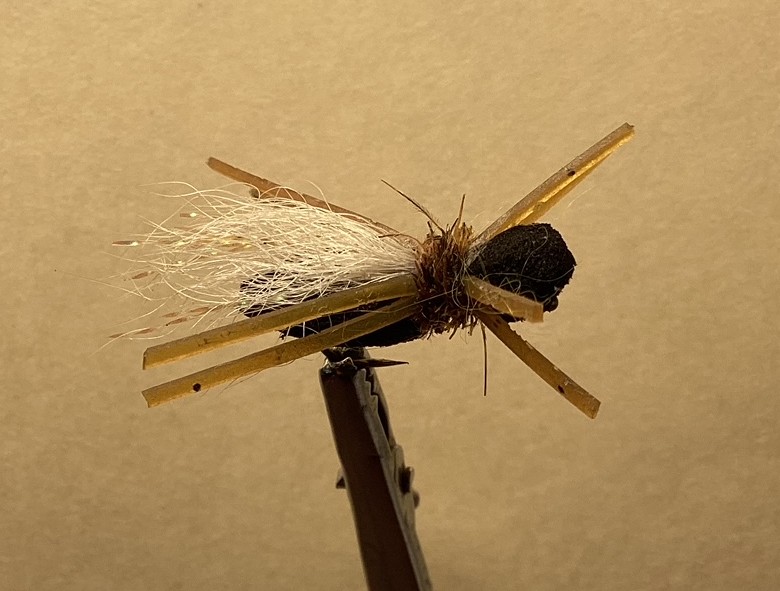
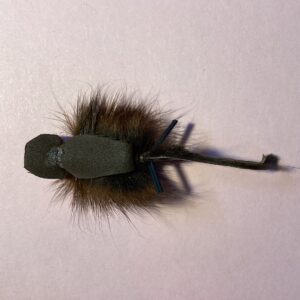
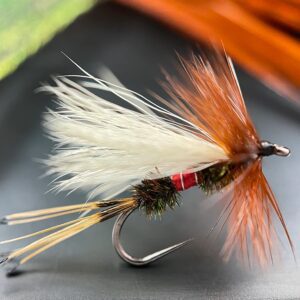
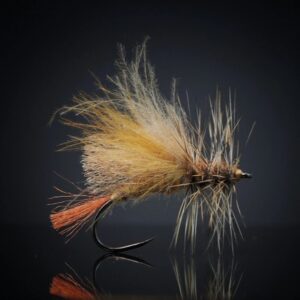
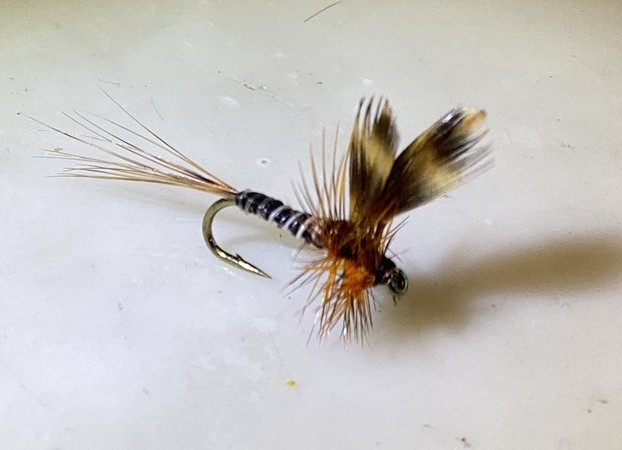
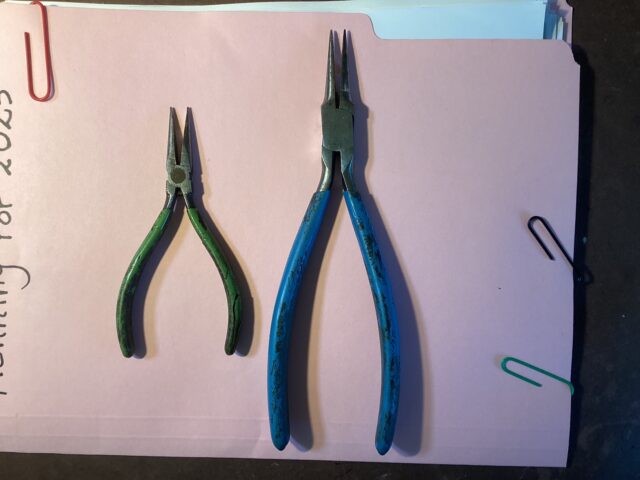
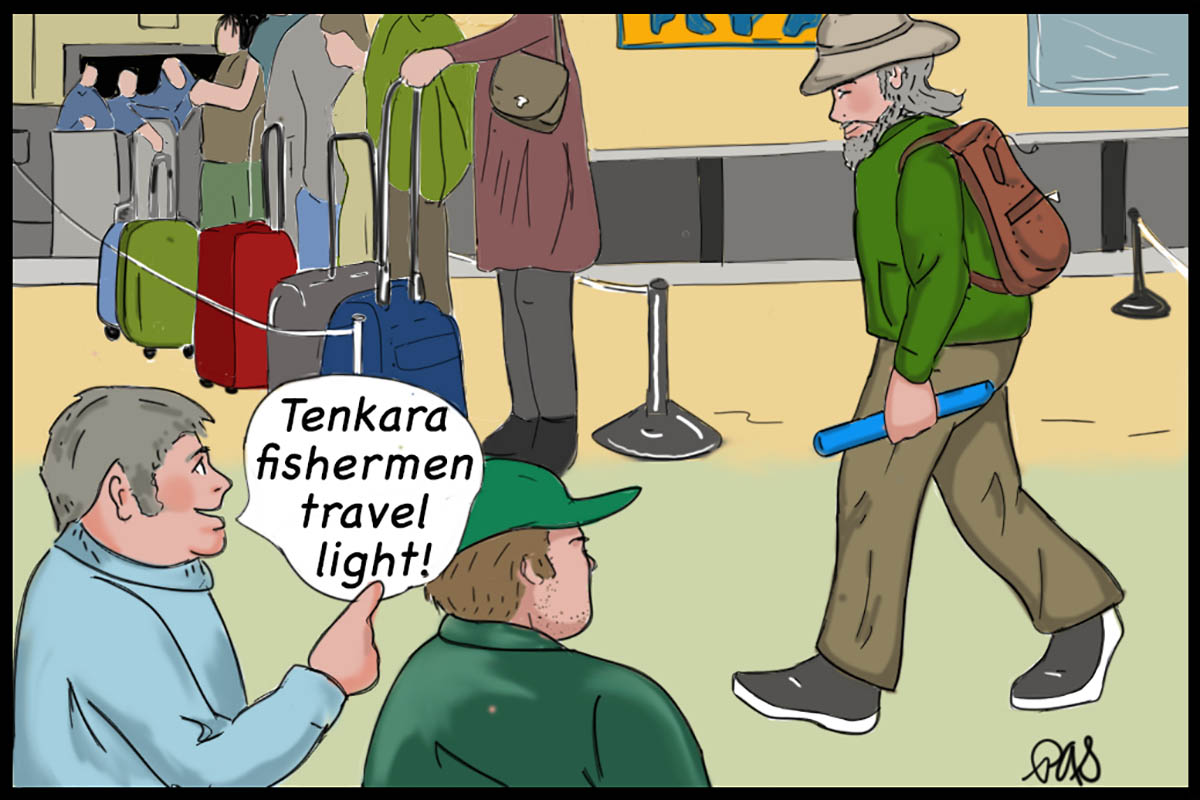
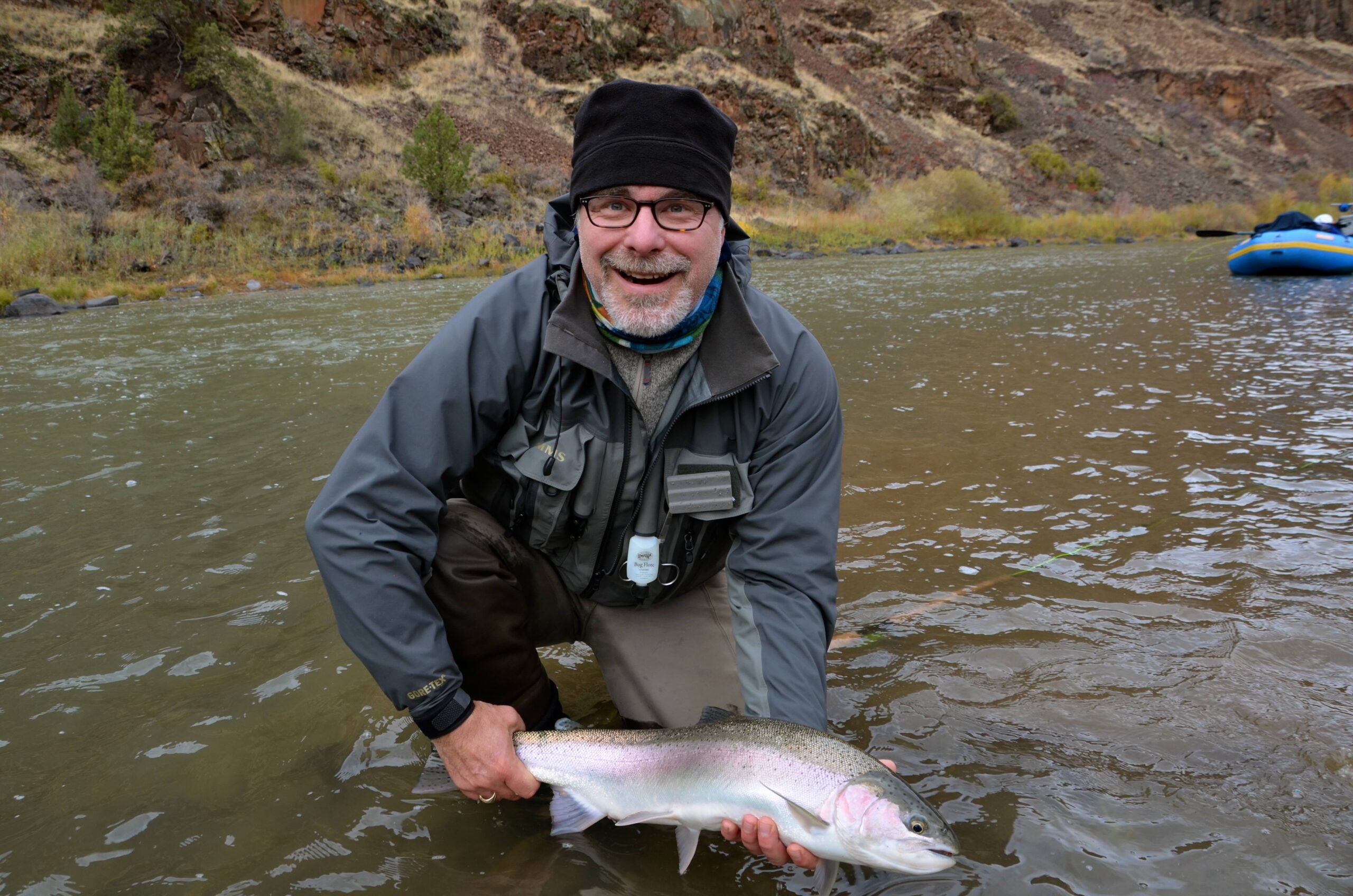
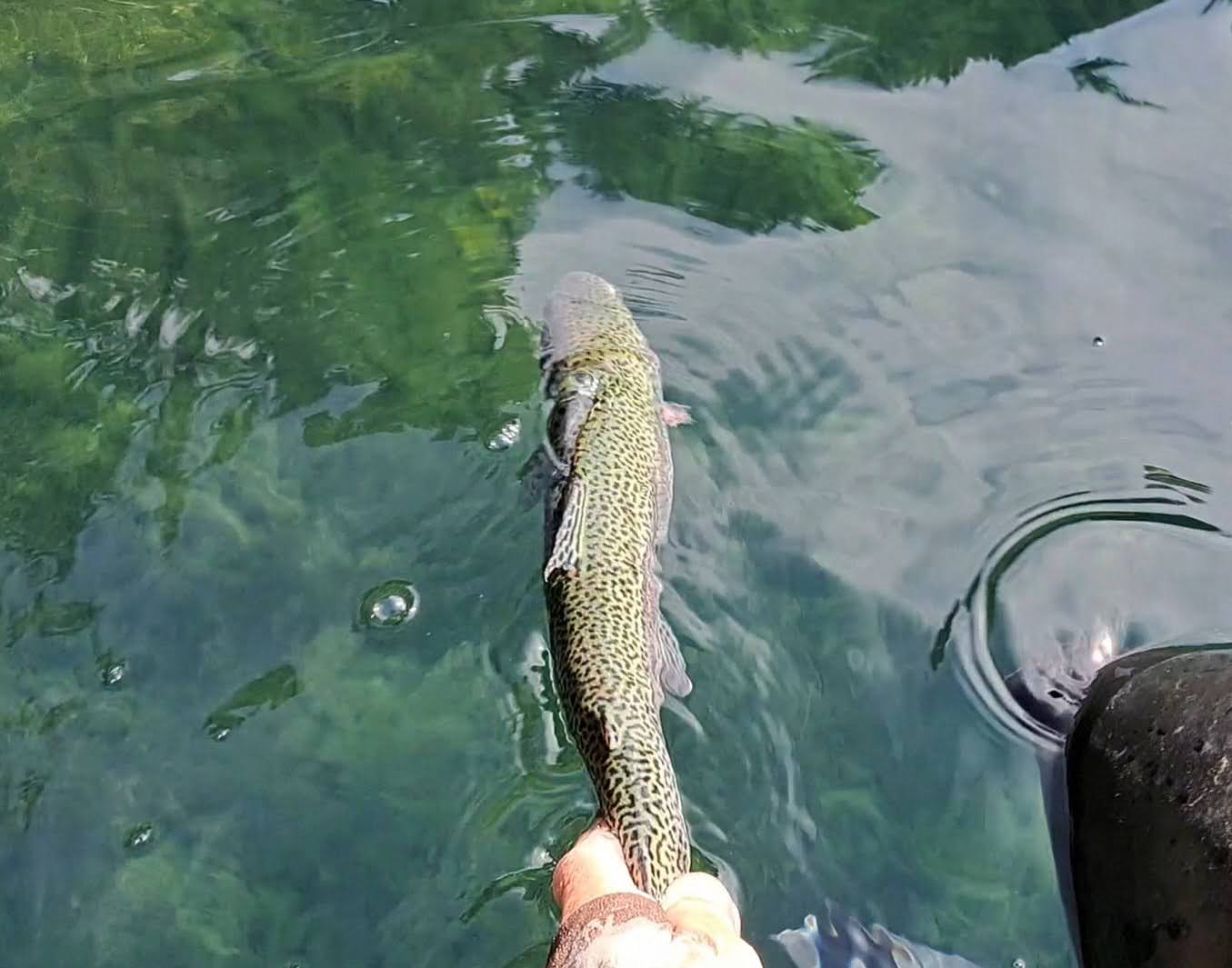
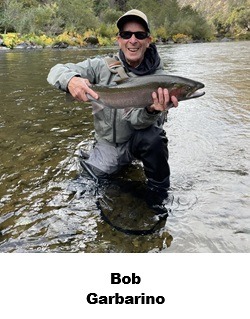 For this month’s “My Turn” article I’m going to focus on what we as fly anglers can do to make a positive impact on fish and the environment they inhabit. From my own journey in fishing, it wasn’t until I began fly fishing that I started to became increasingly aware of the challenges in improving, sustaining and enhancing native and wild fish populations. During my time with many of you, my fly fishing friends, I’ve been inspired by your awareness and passion for a better future in this sport. And we’ve seen some encouraging signs of hope with coming out of collaboration between many of the conservation organizations we support. The Klamath dam removal project is a shining example. The Carmel River Steelhead Association is a local group dedicated and fighting for their native fish. However, as I write this, I’ve become increasingly concerned that the headwinds facing our fisheries are growing stronger in the face of a number of politically motivated decisions. It’s becoming more urgent that we become stronger voices for fish and their habitats. So, what can we do? Many of us practice conservation already to some degree. Here’s a few suggestions of what we can do on and off the water. Most of my suggestions apply to cold water fish such as trout and salmon, but can be used for other species as well.
For this month’s “My Turn” article I’m going to focus on what we as fly anglers can do to make a positive impact on fish and the environment they inhabit. From my own journey in fishing, it wasn’t until I began fly fishing that I started to became increasingly aware of the challenges in improving, sustaining and enhancing native and wild fish populations. During my time with many of you, my fly fishing friends, I’ve been inspired by your awareness and passion for a better future in this sport. And we’ve seen some encouraging signs of hope with coming out of collaboration between many of the conservation organizations we support. The Klamath dam removal project is a shining example. The Carmel River Steelhead Association is a local group dedicated and fighting for their native fish. However, as I write this, I’ve become increasingly concerned that the headwinds facing our fisheries are growing stronger in the face of a number of politically motivated decisions. It’s becoming more urgent that we become stronger voices for fish and their habitats. So, what can we do? Many of us practice conservation already to some degree. Here’s a few suggestions of what we can do on and off the water. Most of my suggestions apply to cold water fish such as trout and salmon, but can be used for other species as well.